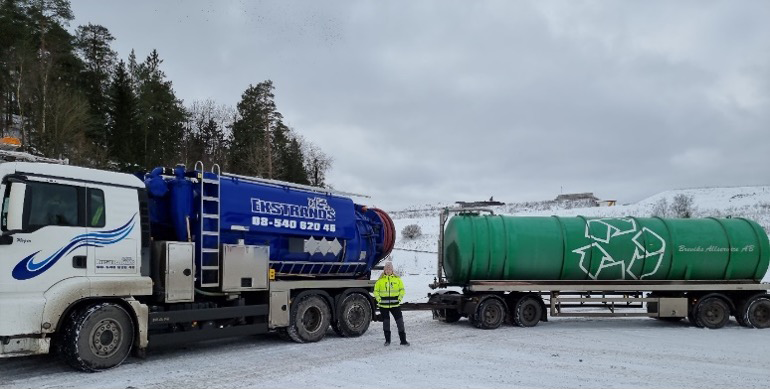Swedavia
Client: Swedavia
Assignment: Treatment of PFAS-contaminated surface runoff using Surface Active Foam Fractionation (SAFF).
Scope: Arlanda airport is owned by Swedavia Logistics and is located in Arlanda, Stockholm. Within the property several collections pond are situated, collecting surface water runoff. As several of the activities within an airport contains PFAS, the water in the storage ponds are contaminated with PFAS. Upon request from Swedavia, Envytech has carried out a treatment trial to evaluate the SAFF-method for treatment of the storage ponds from PFAS. The trial was carried out using a full-scale SAFF treatment plant.


The water was transported by tanker trucks to one of Envytech’s SAFF40 facilities, and the total volume for the test included 40m3 of PFAS-contaminated water. Apart from PFAS the water also contained high levels of BOD, DOC and propylene glycol.
The water was transferred to the SAFF where it was treated with a batch time of 19 min. Since each primary fractionation chamber comprises 2600 liters, about 14 cycles were performed. The treated water was released while the generated PFAS waste went to the storage tank pending further fractionation steps to minimize waste. As the water did not tend to foam, an addition of detergent liquid was made to allow evaluation of whether different results would be obtained when a “foam creator” was introduced.
A total of 3 samples were collected:
1. Untreated water – tanker
2. Treated water
3. Treated water with the addition of detergent as ”foam-creator”
Laboratory analysis included TOC, DOC and Suspended particles, PFAS 25 TOP, PFAS 25.

The total amount of PFAS was measured at 1360 ng/l, and 1491 ng/l when performing TOP analysis, where information is also obtained about oxidizable precursors. This provided information that only a limited amount of precursors are found in the water. The substances that increased in the TOP analysis were, PFBA, PFPeA and PFHxA. The effect of the treatment is as expected, the SAFF removes PFAS with C6 chemistry and above at between 79-100%. The total reduction in concentrations of PFAS 11 is noted from about 1500 ng/l to 300 ng/l, which gives a reduction of the total amount of PFAS by about 75%.
See table below for a compilation of concentrations and results.

